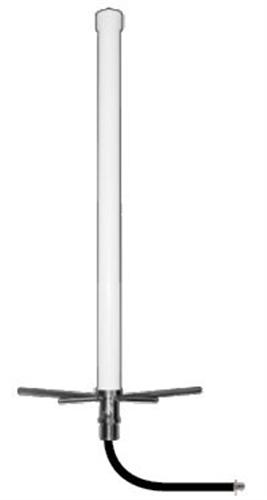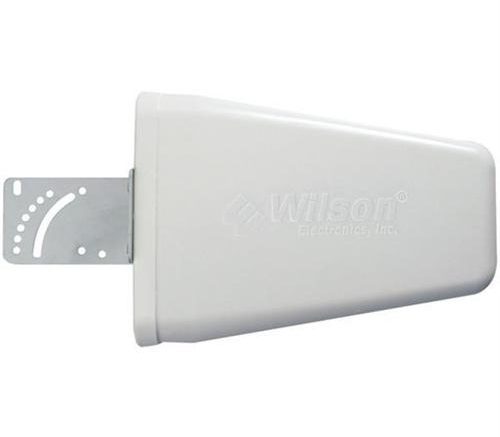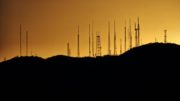A cellular signal booster is a complex system with several parts. One of the most important is the outdoor antenna. The outdoor antenna picks up signals from cell towers that are too weak for your phone to get them. It does this two ways. First it is much larger than your phone’s antenna so therefore more sensitive. Second, you mount it up high above your roof — 15 feet above the booster —so it has a better chance of picking up distant cell signals.
Do you need to aim your cell booster antenna?
If it looks like the picture above, then yes you do. That wedge-shaped antenna is referred to as a log-periodic antenna and it’s the most sensitive type of cell booster antenna. It’s the one that will do its best work for you if you know where the cell towers are. On the other hand, without detailed knowledge, it would be very hard to know where to aim.

There’s another type of antenna that is going to be some variation of a vertical pole. This is an omnidirectional antenna and it’s good for two reasons. First of all you don’t have to aim it and second of all it can pull in signals from all areas at the same time so if you have two different towers in two different directions it will work much better. An omnidirectional antenna isn’t as sensitive as a log periodic. It’s good for cities and suburbs where the towers are scattered everywhere. In a rural area, a log periodic is your best choice.
How to aim a log periodic cellular antenna

The easiest way, to be straight with you, is with a cellular signal meter. SolidSignal.com has some good ones, one a bit more pro-grade and therefore more expensive. However, even the less expensive one is going to work very well for most people.
If you don’t have a cell meter and you don’t think it’s worth spending the time, the next reliable option is a web site. I recently found antennasearch.com which shows the location of all the cell towers in your area. I admit that the site looks like it hasn’t been changed in about 15 years, probably because it hasn’t. However, the mapping data is fed into it on a regular basis so it’s going to give you really accurate results. It will show the location of every cell tower and every cell antenna in your area. If there aren’t a lot of them, you will want to aim your log periodic antenna toward the one there is. If you are surrounded by towers (and you still can’t get great cell service indoors, this happens all the time) then you want an omnidirectional antenna which doesn’t need aiming
How to get the cellular antenna you need
The easiest way to see all your options is to shop Solid Signal. There’s a huge number of choices, but don’t be discouraged! The best way to get the customer service you deserve? Call us. Yes, it may seem a bit old fashioned, but you can get a real consultation from a cellular systems professional. Start by calling 888-233-7563. Our team is here during East Coast business hours. You’ll be able to go into detail about your setup and our team will recommend the right equipment from you. It doesn’t matter if your space is 20 square feet or 200,000 square feet. Our experts will find the right solution. If you’d prefer email or if it’s after hours, fill out the form below. We’ll get right back to you!





